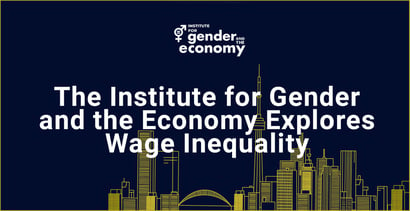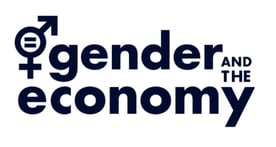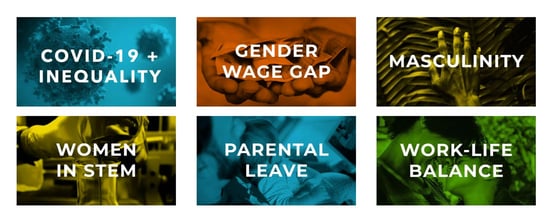

In a Nutshell: Researchers at the Institute for Gender and the Economy at the University of Toronto’s Rotman School of Management explore the widening gender gap in wage levels. They found that gender wage inequality negatively impacts all of society, not just women workers. The Institute develops innovative strategies to narrow the income gap, encourage healthier family life, and grow the economy.
Researchers at the Institute for Gender and the Economy (GATE), based at the University of Toronto’s Rotman School of Management, look for new ways to understand a widespread problem — gender wage inequality.
Gender wage differences directly impact those on the lower end of the earning scale, but the consequences extend well beyond that. GATE’s fresh look at data and methodologies around gender wage issues shows that inequities slow progress for all, and conventional methods that address the problem don’t seem to work.
GATE Founder and Director Sarah Kaplan wanted to bring more innovation to the approach of researching the problem and its solutions. Kaplan spent the first phase of her career exploring how organizations respond to emerging fields and technologies. At GATE, she applies the same innovation focus to the challenge of achieving gender equality.

“I realized we’d stagnated in progress and needed another approach,” Kaplan said. “We’re putting forward a new conversation, a new way of talking about issues related to gender inequality that considers all of its intersections.”
GATE takes socioeconomic class, race, disability, and indigeneity into account and strives to represent gender in its full complexity. Probing multiple viewpoints highlights subtle negative impacts of gender inequality. GATE aims to cover the broad gamut of global gender wage issues.
In addition to funding research, GATE communicates insights to policymakers, corporate leaders, nonprofits, and the public to promote awareness. That encourages stakeholders to develop practical solutions for reducing the gap and building a more vibrant environment for family life and growth.
“The gender wage gap has a reinforcing cycle that’s bad for everyone,” Kaplan said.
Gender Wage Inequality Impacts the Broader Economy
GATE’s assessment of the impact of the COVID-19 pandemic on gender inequality primarily in North America demonstrates the value of the Institute’s broad-based approach. It also highlights the varying effects of COVID-19 based on race, gender, and vulnerability level.
In North America, the pandemic brought massive job losses for women. That was true because many of the most damaged sectors, including hospitality, food, and daycare, predominantly employed women — especially women of color. More job loss occurred because mothers were forced to leave the workforce when schools and daycares closed.
Although womens’ employment has partially recovered as the pandemic has receded, the quality of the work hasn’t rebounded. More women remain in lower-paying and part-time jobs, with single women heads of household and women over 55 still lagging.

“We have to look into this more, but evidence suggests a lot of grandmothers are picking up the slack for their children and grandchildren,” Kaplan said.
These trends exacerbate macroeconomic dysfunction by reducing the amount of money available for consumption. When individuals and families have less to spend, they purchase fewer goods and may defer large purchases, including cars and homes.
Women with children tend to have lower-paying roles, and this leads many new families to decide that the woman should take a step back to take care of the children.
“Men feel constrained to be the breadwinners and participate less in family life, and women feel constrained to family life and participate less in the economy,” Kaplan said. “Men can’t realize their family roles, and women can’t realize their outside ambitions.”
Positive Approaches to Recruitment and Promotion
Women need access to higher-paying jobs and leadership roles to achieve a balance where parents can share breadwinning and childrearing roles according to their abilities and preferences.
Unfortunately, the typical method organizations use to address gender discrepancies — diversity training — isn’t very effective.
“We’ve learned that despite massive investment, diversity training either doesn’t work on its own, or it backfires,” Kaplan said.
GATE research reveals viable alternatives, including recruitment and promotion strategies with proven effectiveness, that require easily achievable organizational changes.
One study examined language in ads posted for typically male-dominated jobs (such as those in STEM fields) and found that recasting ads in gender-neutral language led to more women applicants. Men who fell outside traditional masculine stereotypes because of racial status, country of origin, or sexual orientation were also more likely to apply.
“When you take out masculine language, you attract more qualified candidates,” Kaplan said.
Another project investigated the effects of a minor tweak in a typical procedure for advertising internal promotions. The hiring entity informed all qualified candidates they would be considered for promotion unless they opted out instead of inviting candidates to opt in.
Women seek internal promotions at lower rates than men because they may be afraid of the negative backlash from being perceived as too ambitious. But when the opt-in option changed to an opt-out choice, the gender gap disappeared entirely.
“It’s a little change, but it’s innovative because organizations typically don’t do that,” Kaplan said. “It’s an example of the kinds of reframes and new ideas we’re talking about that can pay huge dividends.”
Research-Based Strategies Promote Family and Growth
Equal job distribution won’t fix the most significant dilemma — what to do when the first child arrives and it’s time to allocate family responsibilities.
Kaplan said the first step in alleviating some of the stay-at-home pressure secondary wage earners experience is to create work schedules that are more conducive to healthy family life.
What she calls “clopening” work schedules is one example. In retail, restaurants, and other sectors traditionally dominated by women, there’s a pattern of working a closing shift at night followed by an opening shift in the morning.
“Those are terrible — you can’t have a family with a work schedule that requires you to do a clopening,” she said. “Whether we are talking about white collar, service, or blue-collar jobs, employers need to consider how their job scheduling and work design may have unintended gendered consequences.”
Parental leave is another factor. Canada enables parents of all genders up to a year or more of leave. Canadian men typically refuse it. Many Canadian women feel pressure to use it all, even when they prefer to return to work early and continue their career progressions.
Even when Canadian women decide to go back to work before their entire year of leave ends, there’s not enough demand for infant daycare to make going back to work a viable option. In the US, where few have access to parental leave, infant daycare is more widely available.
Kaplan calls for more public support for paid leave in the US and for more affordable care options for children of all ages.
In Canada, which is currently moving to a more affordable child care regime, attention is turning to gender equity in parental leaves, so that both parents are able to participate fully in their child’s development.
“When women are out of their jobs for so long, it’s hard for them to catch up when they return,” she said. “To fix that, we need to change the culture.”
Advertiser Disclosure
BadCredit.org is a free online resource that offers valuable content and comparison services to users. To keep this resource 100% free for users, we receive advertising compensation from the financial products listed on this page. Along with key review factors, this compensation may impact how and where products appear on the page (including, for example, the order in which they appear). BadCredit.org does not include listings for all financial products.
Our Editorial Review Policy
Our site is committed to publishing independent, accurate content guided by strict editorial guidelines. Before articles and reviews are published on our site, they undergo a thorough review process performed by a team of independent editors and subject-matter experts to ensure the content’s accuracy, timeliness, and impartiality. Our editorial team is separate and independent of our site’s advertisers, and the opinions they express on our site are their own. To read more about our team members and their editorial backgrounds, please visit our site’s About page.




